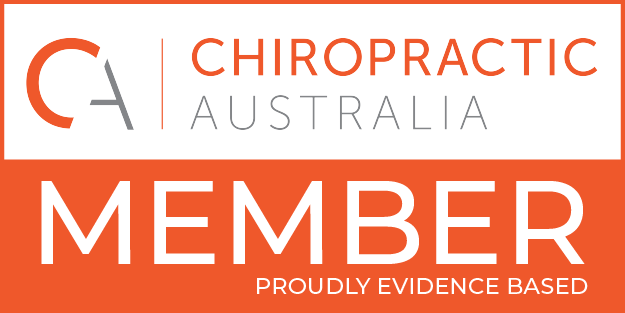When you’re experiencing an injury, ache, pain or niggle which has seemingly come out of the blue, there are a few things that you can take into account. A good way to understand and visualise this is with the bucket analogy. By visualising our capacity for stress and recovery as a bucket, we can better manage our physical and mental well-being. Unless they are well managed, when we continually add physical, physiological, and psychological stressors into our bucket, overflow happens and injury occurs. In this post, we’ll break down what stressors to consider, and how you can help empty your bucket and mitigate injury risks.
What Fills Our Bucket (The Bucket Analogy)?
Our bucket represents our body’s capacity to handle various forms of stress. Each activity or event that exerts pressure on us adds to the water level in our bucket. These can be positive stressors or negative stressors. For example, exercise, although good for the long term and very beneficial and important for our health, can cause temporary stress on our body as it adapts to the load placed on it. Here’s a breakdown of what contributes to filling our bucket:
1. Physical Stress:
- Intense Workouts performed too frequently, or without adequate recovery: High-intensity training sessions, heavy lifting, and long-distance running all add significant amounts to our bucket. While I strongly advocate for exercise and I am not encouraging you to stop doing these forms of exercise, load management seems to be the issue for most of us. When we talk about load management, this is how we plan out our training weeks and months. For example, if you have a big run planned on Sunday, your runs earlier in the week shouldn’t be as big. Or, if you love HIIT or strength training, balancing your training days out to include different energy systems and muscle groups will help to mitigate bucket overflow. Whenever I see a patient who has suffered a new injury after exercise, I always ask, “Are you following an exercise program?” Most programs designed by qualified strength and conditioning coaches and health professionals will take recovery into account and program accordingly.
- Repetitive Movements: Building on the last point, overuse of certain muscle groups from repetitive activities or exercises can also cause overflow in our bucket. This can be in terms of exercise, or even the things we do throughout our day-to-day life. An obvious example of this is the type of work we do, for example, office workers will sit in the same position for most of the day, painters will use the same muscles to paint, etc.
- Poor Technique: While we all will have different ways our body moves and functions and what is a good technique for some may look different to others, improper form during exercises can lead to increased stress on joints and muscles.
2. Psychological / Emotional Stress:
Undoubtedly, emotional and psychological stress plays a huge role in injury and pain occurrence. When we are stressed we have higher levels of inflammation within the body, our cortisol levels are raised and we get a negative feedback loop of pain and stress. We have previously done a blog post that discusses this link, “Exploring the Interconnectedness of Chronic Pain and Mental Health Disorders”, and stay tuned for our next blog post on the role of the HPA axis and its relationship to pain.
3. Environmental/Physiological Stress:
I like to think of this area as our general health and well-being choices. The obvious points to consider here are:
- A lack of Sleep: Poor sleep quality or insufficient sleep duration can severely affect how our body recovers and prepares for the day ahead. We have previously done a blog post on the importance of sleep and going through all the sleep stages, “Nine Tips for Better Sleep”.
- Diet: Poor nutrition, dehydration, and unhealthy eating habits will also limit how our body recovers. If we eat or consume a lot of inflammatory foods or drinks (e.g. alcohol, highly processed foods, food we are intolerant to, etc) that will increase the general levels of inflammation in our body, which again will limit our healing capacity and heighten our pain levels.
- Comorbidities and external factors: While some of these may be irreversible or difficult to change, other factors we can take into account are pollution levels, weight gain, etc.
The Risk of Overflow (The Bucket Analogy)
When our bucket becomes too full, it overflows, leading to various negative consequences, including injuries. Here’s why overflow is dangerous:
1. Injuries:
Injuries can occur when the body is pushed beyond its limits without adequate rest and recovery measures. This can be seen in overuse injuries like tendonitis, stress fractures, and chronic pain conditions or more acute injuries such as sprains or strains.
2. Decreased Performance:
Fatigue and constant high-stress levels can reduce our overall performance and increase the likelihood of mistakes. All of the factors explained above that we add to our bucket are taxing on our nervous system. If we don’t have ways to replenish the nervous system following physiological or psychological stress then we have decreased availability in our cognitive functions which in turn creates detriments to our performance and capabilities.
3. Concurrent Health Issues:
Chronic stress can weaken our immune system, making us more susceptible to illnesses.
As well as that, continuous high stress can exacerbate anxiety, depression, and other mental health issues, again we have discussed this in our previous blog post “Exploring the Interconnectedness of Chronic Pain and Mental Health Disorders”
How to Empty Our Bucket (The Bucket Analogy)
To prevent overflow and maintain optimal health and performance, it’s crucial to regularly empty our bucket. Here are some effective strategies:
1. Rest and Recovery:
- Sleep: Prioritize 7-9 hours of quality sleep per night to allow your body to repair and rejuvenate.
- Active Recovery: Incorporate low-intensity activities like walking, yoga, or stretching to promote blood flow and muscle recovery. These activities are also good for our mental health.
- Rest Days: Schedule regular rest days to give your body a break from intense physical activity.
- Follow a well-designed workout program/plan
2. Stress Management:
- Mindfulness Practices: Engage in mindfulness, meditation, or deep-breathing exercises to reduce emotional stress.
- Time Management: Organise your tasks and set realistic goals to manage workload and reduce stress.
- Therapy and Support: Seek professional help or talk to someone you trust to address emotional and mental health concerns.
3. Healthy Lifestyle Choices:
- Nutrition: Eat a balanced diet rich in vitamins, minerals, and proteins to support overall health and recovery. If you are exercising to a high level your needs for nutritional support and the amount of calories you consume throughout the day will be different to a sedentary person.
- Hydration: Drink plenty of water throughout the day to stay hydrated and support bodily functions. Ensure that after exercise in which you perspired a lot you are replenishing your body with electrolytes
- Environment: Create a healthy living environment by reducing exposure to pollutants, noise, and other stressors.
4. Proper Training Techniques:
- Warm-Up and Cool-Down: Always warm up well before a workout to make sure you’re prepared and ready to go when it gets to the important stages of the workout. You’ll probably find that you perform better too.
- Varied Workouts: Mix up your training routine to avoid overuse injuries and promote balanced muscle development. Again, following a well-structured training program should balance different muscle groups and energy systems to avoid overload in certain areas.
- Listen to Your Body: Pay attention to signs of fatigue, pain, and discomfort, and adjust your training accordingly. You don’t have to go hard in your training every day, and sometimes it’s better to just move lightly if your body isn’t feeling as good as it normally does.
Understanding the bucket analogy helps us visualise the cumulative impact of various stressors on our bodies and the importance of maintaining balance. By recognising what fills our bucket, acknowledging the risks of overflow, and implementing strategies to empty our bucket, we can enhance our overall well-being, prevent injuries, and sustain a healthy, active lifestyle. Remember, the key to longevity in fitness and health lies in finding the right balance between stress and recovery.







